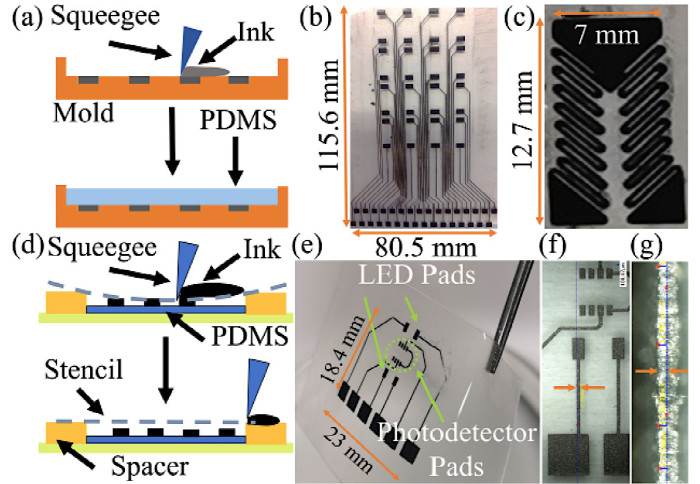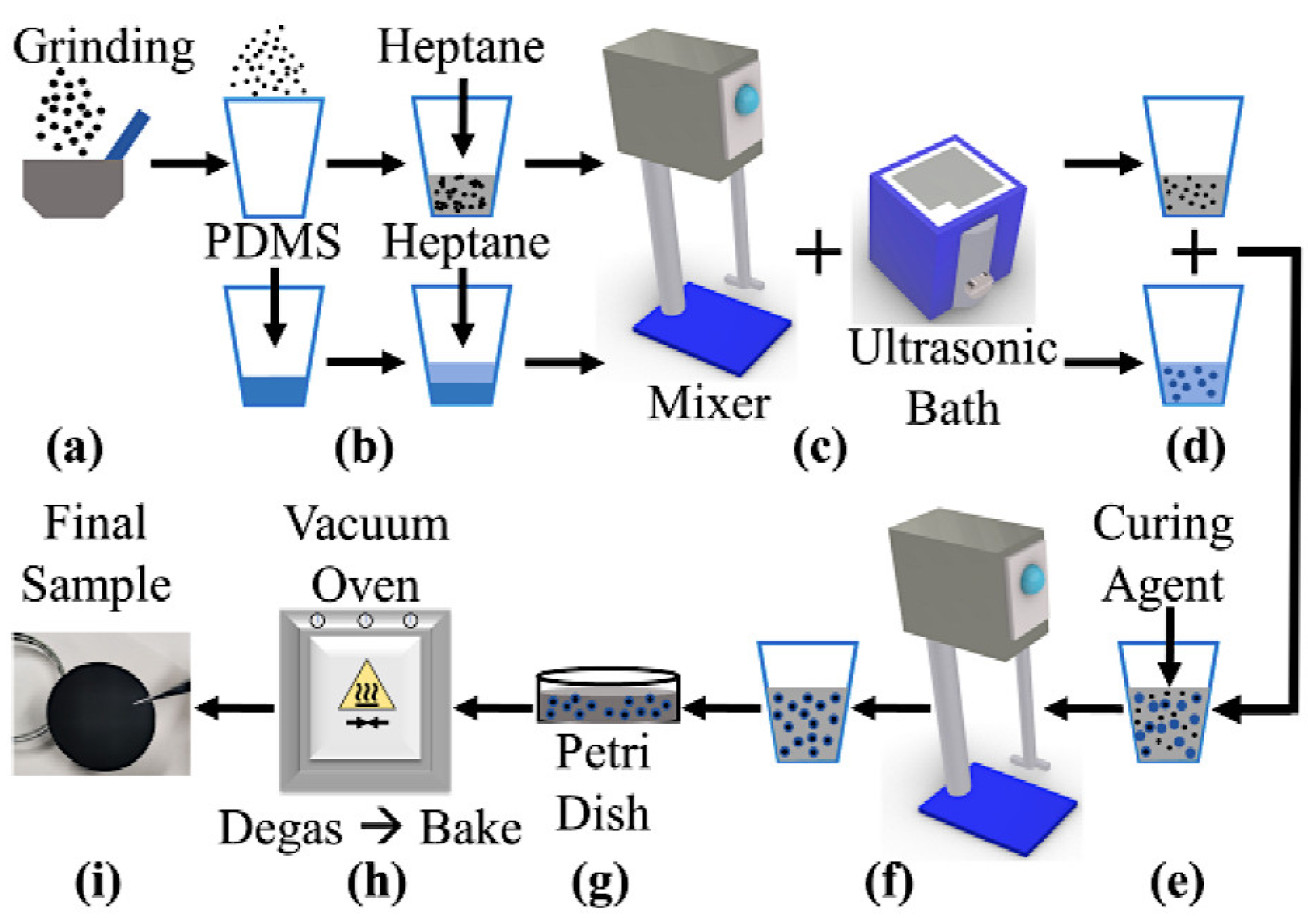

Hamlyn researchers examined electrical and mechanical properties of carbon-based elastomeric composites for printed sensors and electronics.
Printing technologies have attracted significant interest in recent years, particularly for the development of flexible and stretchable electronics and sensors. Conductive elastomeric composites are a popular choice for these new generations of devices. The development relies on ink formulations, optimised for electrical, mechanical and other properties tailored to a specific application.
Elastomers (e.g. polydimethylsiloxane (PDMS) and others) are used as a dielectric matrix. Candidate conductive fillers include: Ag nano-wires and nanoparticles, carbon nanotubes, graphene nano-platelets, acetylene carbon black (CB) and graphite.
Such inks can be used with additive fabrication approaches (screen, stencil, moulding, transfer and extrusion-based printing and stamping) to create electrical interconnects, sensors (e.g. piezo-resistive, piezo-capacitive, electrophysiological, temperature and electrochemical), heaters and dielectric actuators for wearables and robotics.
Electrical and Mechanical Characterisation of Carbon-Based Elastomeric Composites for Printed Sensors and Electronics

In the light of this, our researchers at the Hamlyn Centre examined the electrical and mechanical properties of elastomeric composites of PDMS [an insulating elastomer] with carbon-based fillers (graphite powder and various types of carbon black, CB). The carbon-based fillers performed as a function of the composition.
The electrical and mechanical properties of different CB-PDMS and graphite-PDMS composites were thoroughly characterised and compared. These properties performed as a function of filler concentration to obtain a library of ink formulations for stretchable sensor fabrication and design (which could be utilised in different applications).
The research results and equations allowed one to choose carbon-based-PDMS composite formulations for printed stretchable electronics based on different requirements of the devices and applications.
This research was supported by EPSRC Programme Grant “Micro-robotics for Surgery (EP/P012779/1)” (Minghao Hu, Panagiotis Kassanos, Meysam Keshavarz, Eric Yeatman and Benny Lo, "Electrical and Mechanical Characterisation of Carbon-Based Elastomeric Composites for Printed Sensors and Electronics", 2021 IEEE International Conference on Flexible and Printable Sensors and Systems (FLEPS), July 2021).
Supporters

Article text (excluding photos or graphics) © Imperial College London.
Photos and graphics subject to third party copyright used with permission or © Imperial College London.
Reporter
Erh-Ya (Asa) Tsui
Enterprise

Contact details
Tel: +44 (0)20 7594 8783
Email: e.tsui@imperial.ac.uk
Show all stories by this author



